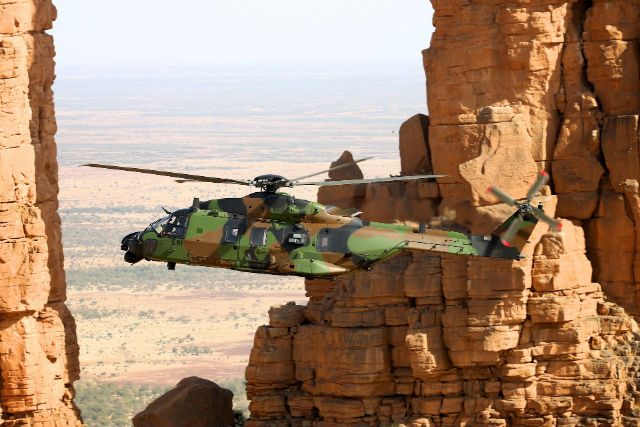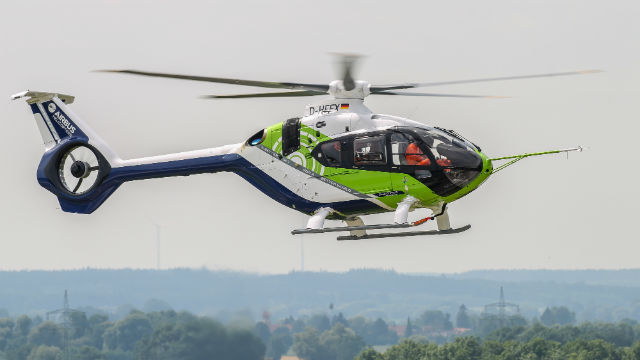“Project Jersey”, named after the Channel Island, is a curious title for an internal initiative – particularly one at a French manufacturer – but on closer inspection, there is sense behind it.
For Turbomeca, the Bordes-based helicopter engine specialist, it signifies the process of absorbing the 50% of the RTM322 turboshaft project previously owned by UK firm Rolls-Royce. The appellation, of course, is a nod towards the Anglo-French nature of Jersey: a UK crown protectorate that sits a stone’s throw from the Normandy coast.
Turbomeca is now in its third year of the project, having bought out its former partner in 2013. The first 12 months saw it take on maintenance and repair activities, the second, testing of the full engine, and the last piece of the puzzle is to align the supply chain with the French firm and internalise any manufacturing activities previously performed by R-R.
As executive vice-president of programmes, Cyrille Poetsch notes: “It is now really a Turbomeca engine.”
Although the acquisition of the entirety of the programme gives Turbomeca a healthy order backlog of 2,100-2,600shp (1,570-1,940kW) RTM322s still to produce – entirely for the NH Industries NH90 military transport helicopter – arguably more important is the range of possibilities it provides in the 2,000-3,000shp engine segment.

Airbus Helicopters
With the Tech 3000 demonstrator programme also in progress – due for a full engine run in late 2016 – Turbomeca suddenly has a basket of options for high-output applications, both in the short and long term, as part of its High-Power Engine family.
Further out, Tech 3000 provides a relatively mature platform that can form the basis of an all-new engine for a next-generation heavy rotorcraft – the Airbus Helicopters X6 being the obvious example – while in the near-term providing a range of upgrades that can filter down onto the RTM322.
The amount of power requested by a helicopter manufacturer will determine what goes into any development, explains Poetsch. At the lower end this could be met with some light modifications to the RTM322, he says, while mid-range applications could see the engine gain a new compressor and hot section. High-power applications will require a completely new model.
“The RTM322 is a good engine, but we are improving it to address reliability and technology issues. It is a very solid base to construct a future family of engines,” he says.
Separately, Turbomeca continues to pour research funding into means of achieving “a technological breakthrough for fuel consumption” through the development of a “sleep mode” for twin-engined helicopters. This would be an automated system that allows one powerplant to be shut down in cruise, dramatically cutting fuel burn, while also ensuring the engine can rapidly be brought back on line.

Airbus Helicopters
“We continue to mature that and we will do some tests on the test bench and we really believe this is very promising for the future. Now the key question is when will the market be ready for this type of technology?” says Poetsch. “We now have to work with helicopter manufacturers to see how we can go one step further on this.”
The company has proposed the technology to the big four airframers, but is likely to proceed through the flight-test phase with a single partner.
Ground trials of an electric restart system were conducted in 2015 using an RTM322 engine, and “I think we have enough now to go for in-flight trials,” he says. “We have done all the demonstrations… on the test bench – now we just need a partner to do some flight tests.”
Airbus Helicopters intends to pursue a similar initiative this year using its H135-based Bluecopter light-twin research aircraft. Although currently utilising Pratt & Whitney PW206B engines, the airframer has indicated a willingness to also collaborate with Turbomeca, which provides the alternative Arrius 2B2 engines for the platform.
Meanwhile, development activities are more advanced on the manufacturer’s clean-sheet 1,100-1,300shp Arrano engine for the Airbus Helicopters H160 medium twin.
First flight of the powerplant took place on 27 January and, says Poetsch, feedback so far has been positive.
It is “confirming the performance [predictions]” in terms of specific fuel consumption, power and weight, he says. “I really believe we are going to have a very, very good and efficient engine with Arrano.”
An undisclosed number of Arranos have been received by Airbus Helicopters so far, with a further 10 due to handed over this year.
Depending on the progress of flight tests, Airbus Helicopters could look to advance the service-entry date of the H160 from the current 2018 plan to 2017. Assembly of the first production Arrano will begin next year, and Poetsch remains coy on whether Turbomeca would be able to meet an accelerated timeline.
“We have already been accelerating it,” he says, referring to the February 2015 deal that saw the Arrano become the sole powerplant on the H160, after the Pratt & Whitney Canada PW210 was sidelined. This move saw the Arrano programme advanced by around six months.
Airbus Helicopters’ motive for the move was largely driven by a requirement for more power on the 5.5-6t H160, and Poetsch confirms that the Arrano will be operating at the top of its range.
“The latest requirement from Airbus was to use the maximum power that we could deliver on the helicopter,” he says.
Source: FlightGlobal.com












































